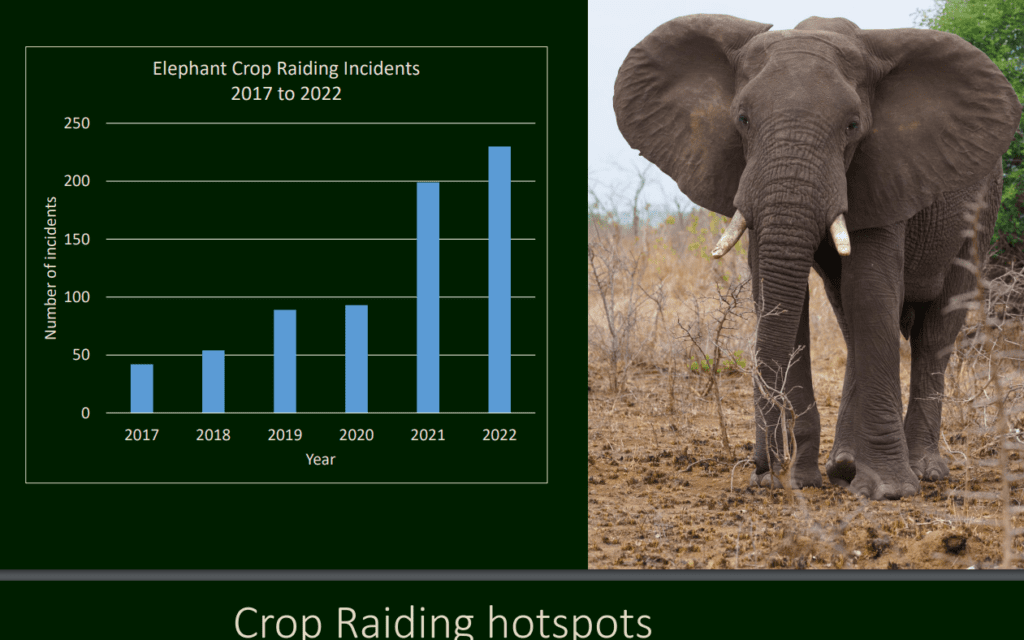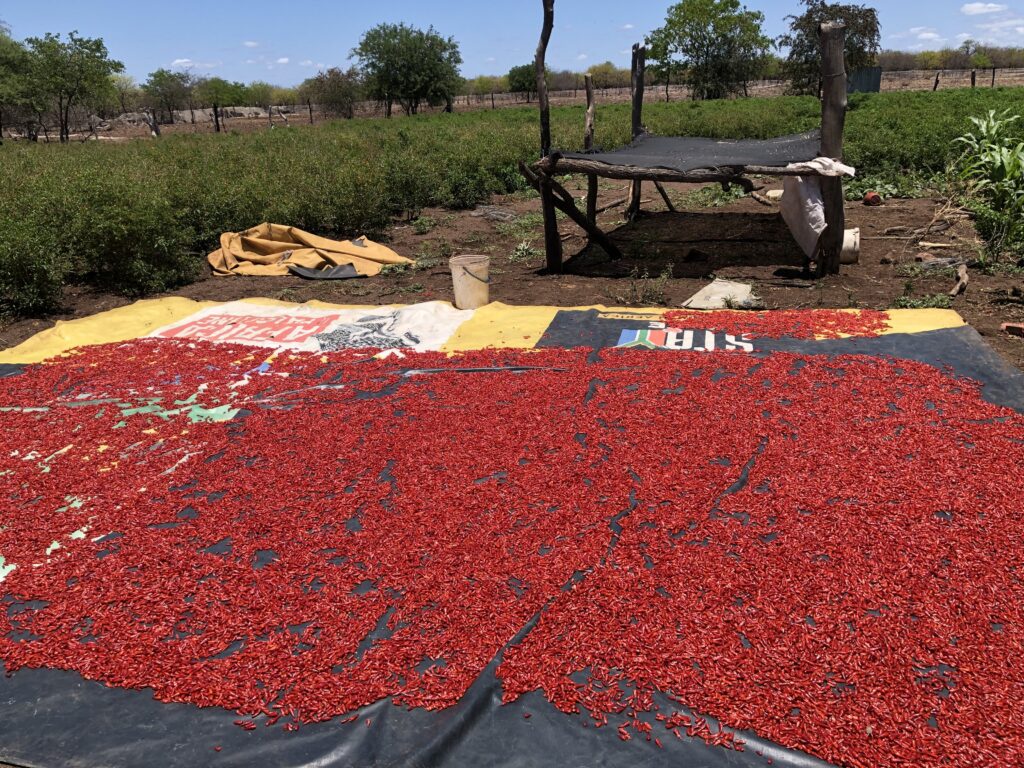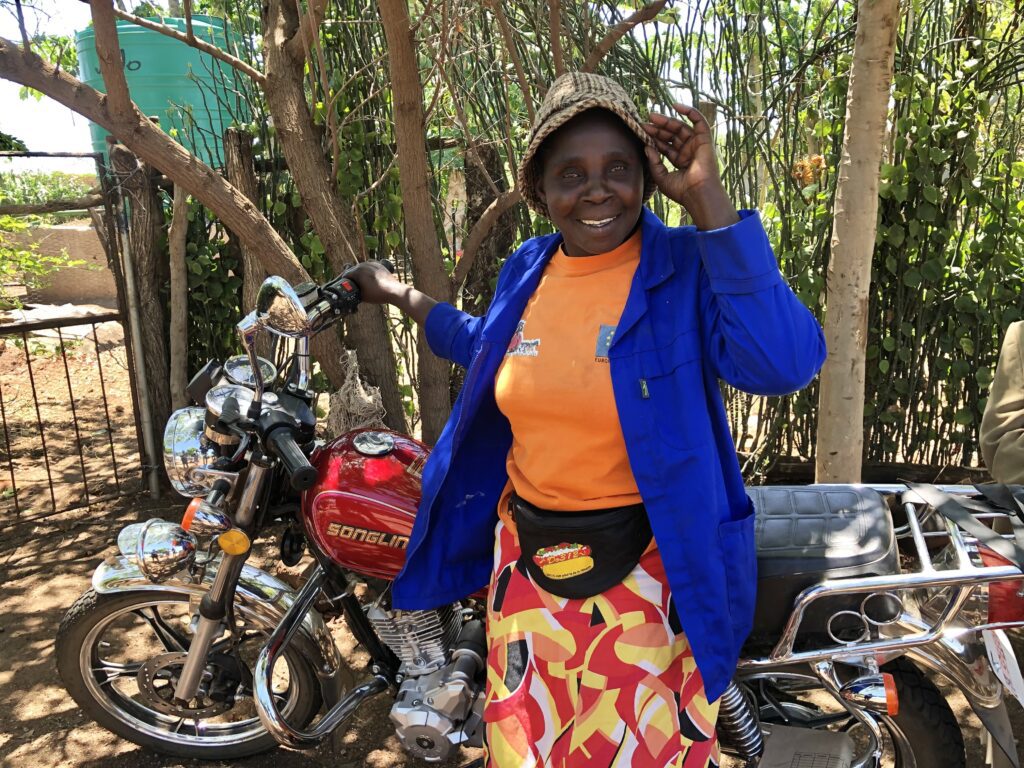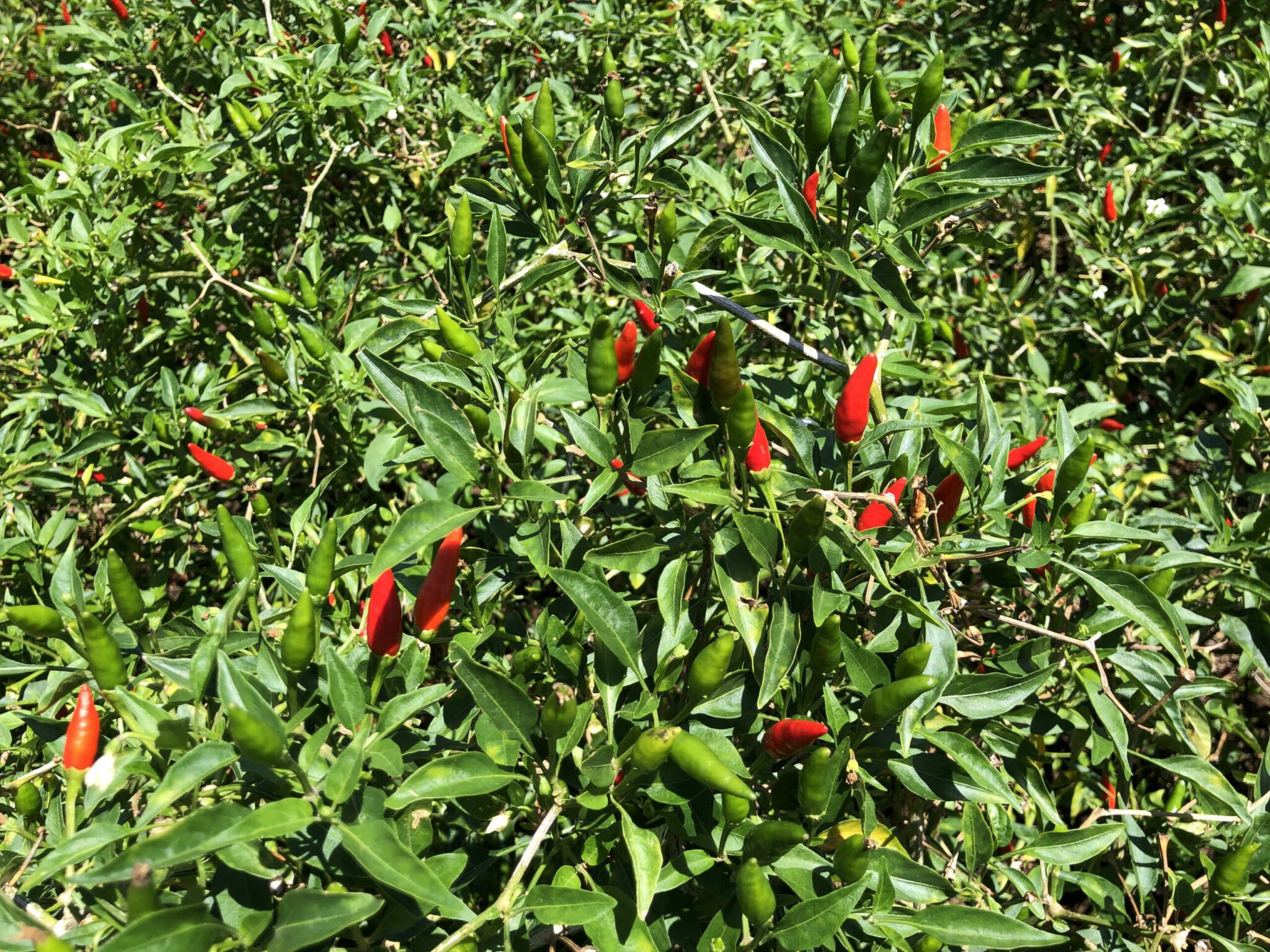What started as an elephant deterrent strategy for villages surrounding Gonarezhou National Park has evolved into a viable income stream for communities that are now involved in international commercial chilli farming, exporting to South Africa and Europe.
Elephants dislike the smell of chillies, so they are used as a repellent in the fields when the rainy season begins.
As Zimbabwe’s second largest national park, Gonarezhou is home to over 11 500 elephants, one of the highest densities of pachyderms in any African protected area and is known as ‘the Elephant Place.’
While bull elephants are currently leaving the park in preparation for the rains, elephants are prone to raiding crops during and after planting seasons, affecting household income for the entire year as subsistence and commercial produce is damaged.
Elephants had the highest number of incidences in 2021, according to statistics from the Gonarezhou Conservation Trust (GCT), which manages the park.

GCT patrols the communities surrounding Gonarezhou National Park to prevent crop raids, but a more effective mitigation strategy was to produce and burn ‘bricks’ made from chilli purchased from neighbouring villages in Chiredzi North.
However, GCT found it difficult to travel to Maware village where they used to buy the chillies, on a regular basis.
According to Community Liaison Officer Hebert Pikela, GCT was also concerned about empowering a distant village rather than locals closer to Gonarezhou, which marked the beginning of chilli farming in the area.
“We looked at what other farmers were doing to chase elephants and discovered they were using chillies because our role is to integrate indigenous knowledge systems with human-elephant mitigation. We discovered Kacholo Chilli Company, which supports chilli out-grower schemes in Zaka as well as parts of Maware and Chiredzi, after researching how to best introduce chilli farming in the area,” he told journalists at a tour of Gonarezhou
GCT, according to Pikela, visited a chilli scheme, the Fuwe Panganai irrigation scheme in Zaka, to learn how chillies were grown.
“Our initial focus was on human-elephant mitigation strategies, but we soon realised chillies were good cash crops that can be trialled in this particular landscape,” he explained.
Kacholo was engaged by GCT to help with the introduction of chilling farming in Chiredzi South.
“We were targeting elephant crop raiding hotspots like Mahenye and Area 1,” Pikela explained, adding the goal of chilli farming was also to empower individual farmers.
Following a baseline survey, Kacholo decided to invest in the community by donating chilli plants and chillies to Gonarezhou for the production of chilli brick moulding.
Chilli farming was introduced to 260 farmers, who were taught that it was a viable source of income.
Initially, farmers planted sorghum there.
“Chillies were quickly identified as a livelihood project, with human-elephant mitigation as a secondary option. Farmers realised that even if elephants were not a major issue in their area, they could help mitigate the problem by donating rejected chillies to areas such as Mahenye and a portion of Malipati in Gonarezhou’s southern region,” Pikela said.
Luckmore Kazamula (38), a chilli farmer in Machindu Village, Ward 9 in Chiredzi South, confirmed chilli farming is profitable.
“We were very fortunate to have a market because Kacholo provides that,” the married father of four explained.
Kacholo pays farmers 80 cents per kilogramme for the chilli.

In a hectare field, Kazamula planted 8 000 seedlings and expects seven to eight tonnes of fresh chillies.
Initially, he planted 6 700 plants, yielding six tonnes of fresh chillies.
“Even though we are paid in local currency, we make a good profit after deducting costs. I can earn an average of $400 USD per month. I’ve also hired one employee to assist me with the next batch,” he explained.
“I began selling in February, and the market is closed now that it is past peak season in October. “
Kazamula explained that it takes three months from planting to harvesting chilli and that harvesting can begin at any time.
“I can get 60 to 70 kg off-peak season, but during peak season, I can harvest one tonne of chilli in one month,” he said, demonstrating that the seeds he planted last month in October already had chilli.
“Chilli plants planted last year can survive and live for years, but their productivity may decrease so we prefer to cut them every year due to a variety of diseases and other challenges.”
Kazamula has a borehole and relies on irrigation to water his plants.
“I’m using a solar system, which is expensive and I can’t afford to water the other side for now,” he said.
According to the contract between the farmers and Kacholo, they are only permitted to sell chilli to them.
“Kacholo manages the growth of all these plants. They give us chemicals and fertilizers needed at that time. Agritex workers guide us step by step,” Kazamula said.
Kacholo has announced that when the next season begins in December, farmers will be paid 60 percent in forex and 40 percent in local currency.
Eneti Marambire, a chilli farmer from Muhlanguleni Village in Ward 10, said she can earn an average of US$100 per week depending on the harvest.
She planted 2 800 seedlings in a larger field and 2 000 seedlings in a smaller field.
“I started farming on October 31 last year,” she said, adding that Kacholo opens its selling season in December after harvesting,
The selling season runs from January to March, then from April to November.
During the off-season, however, Marambire said they continue harvesting and drying while waiting for the season to open.
“Before joining Kacholo, I used to be a cross-border trader and also grew maize, beans, and vegetables, which I sold. I’m surviving, and there’s a lot I’ve done because of chillies,” she explained, stating the majority of farmers were women.
Marambire was able to purchase solar water pumps and a motorcycle.

“I ride the motorcycle to the Kacholo offices in Machindu to pick up pest control and fertilizer,” she explained.
Her plans are to implement drip irrigation with the proceeds from the next round.
“I’d like to buy a Jojo tank to store water. I want to use drip irrigation because I currently spend most of my time watering because I have to constantly move the pipes into the ridges. The benefit of drip irrigation is that you have more time to relax.”
Marambire, who has three children, claims her marriage is stronger now that she is not worried about money.
“Chillies have helped a lot, we women have become independent. I don’t pester my husband to know where the salary is. I don’t even know how much he earns or on which day he earns,” she joked.
“There are no squabbles of money in the house – because we are busy with our own things. We are a happy family. Our marriage is prospering.”
Marambire used to farm sorghum since Muhlanguleni Village is in a dry Region 5 but says chilli provides more yields from a small piece of land.
“With chillies, you can get more and you can plant them all year while you are paid every two weeks,” she said.
According to Pikela, the number of farmers interested in chilli farming is growing, and the community areas surrounding Gonarezhou have been divided into five blocks.
“We have Area 3, Mpfuka area, a name we gave our community engagement platform because dealing with these issues has been a journey. Then from Chipinda, up the Runde River to the railway line to Mozambique, to the community that began chilling farming last year. Now, this has spread to other communities,” he said.
Pikela stated that 216 farmers from Wards 8, 9, and 10 participated in phase one.
“We now have seven wards 9, 10, 11, 12, 5, and 22 involved in chilli farming under phase two,” he said, in addition to the 219 locals employed at Gonarezhou.
“Income generating projects are a better alternative because they empower communities. If you are hungry and have food you can start thinking about conservation. But if people are hungry the next option is poaching.”

